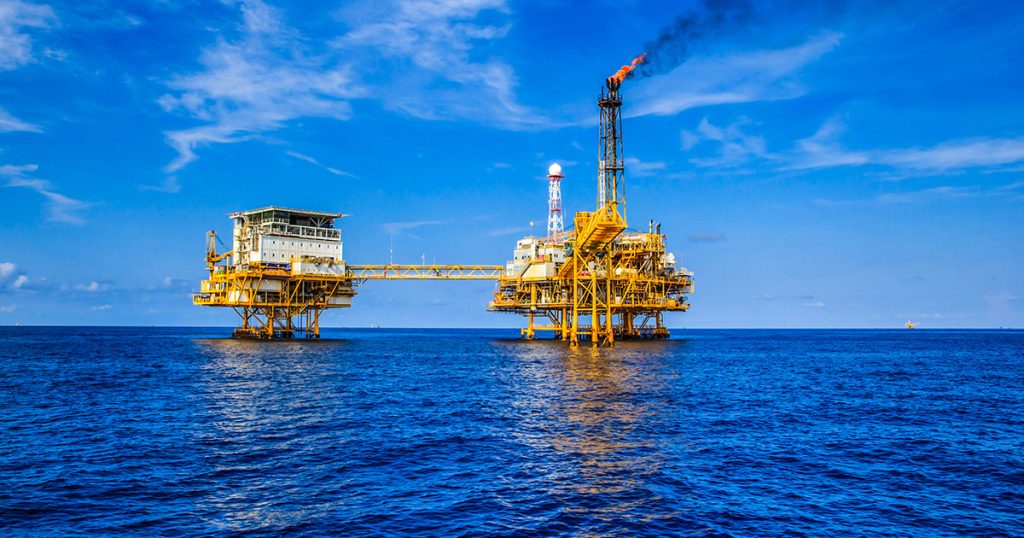Steve Lentz, Director of Network System Science and Engineering at Ocean Specialists Inc (OSI), recently contributed to the SubTelForum Industry Report with this Insider Perspective introduction to the Special Markets segment.
The last two years have seen the announcement of only a few new offshore fiber optic projects serving the oil & gas industry, along with the completion of projects initiated prior to 2015. Despite this hiatus, fiber optic communications for offshore assets have proven their merit and will continue to be developed. Several of the major oil & gas producers remain committed to using fiber optic communications to serve offshore developments. As new oil & gas developments are entering the planning stages, further interest in fiber-optic communications can be expected.
The level of investment in communications infrastructure for offshore oil & gas production assets has always been dependent on the overall investment in those assets. From 2011 to 2014 the price of oil remained around $110 per barrel. Offshore developments were attractive. Communications upgrades, which could improve productivity, were more easily justified. The drop in the oil price, which occurred during the second half of 2014, put some projects on hold and resulted in the dissolution of more speculative projects. A reduction in telecommunications projects then resulted from the overall drop in offshore activity.
During the period from 2015 to 2017, projects started in 2014 or earlier were completed, including additional connections to the BP Gulf of Mexico System, the North West Cable System in Australia, a private system in Newfoundland, and further development in the North Sea. By 2017, the reduction in active projects became clearly noticeable, as seen in the few construction announcements during 2018 and 2019, which included continued network expansion in the North Sea and ENI’s completion of a fiber optic cable installation in Mexico.
Since 2014, the price of oil has been marked by substantial volatility and no new “benchmark” price has been established. From a low of less than $30 per barrel in mid-2016, the price has recovered to an average of about $57 per barrel through the first three quarters of 2019. This makes planning and investment difficult, whether for entirely new production facilities or improvements to existing facilities. Communications systems, which are often seen as operating costs rather than strategic investments, fall into the latter category and struggle to gain traction.
Nevertheless, the major energy producers are beginning to adjust to this volatility and some new investments are proceeding. A consortium of companies forming the Mozambique Rovuma Venture has made a public request for high-speed fiber-optic services. While the primary objective is to serve the onshore gas compression plant, it is assumed that a subsea cable will be needed to reach this remote location. As the Rovuma gas fields are located offshore, connections to offshore assets may be added there in the future. Another recent development is in Guyana, where ExxonMobil has issued an RFI for environmental and regulatory support for a fiber optic project to serve the Stabroek field.
However, the number of publicly announced projects does not tell the whole story. Several of the energy producers remain committed to fiber optics and consider them an essential part of any new development. A few undersea telecommunications systems have been installed with stubbed Branching Units for future offshore connections. A number of developing but as yet unannounced projects provide a reason for optimism.
The subsea telecommunications industry has also undergone a shift over the last five years, most notably as a result of the Over The Top (OTT) providers driving a significant portion of investment in new cables. Smaller, regional cable systems continue to be developed, but must often search for revenue. As a result of these shifts, the two industries will need to find new ways to work together. Shared infrastructure, that is cable systems that provide end-to-end capacity as well as connections to offshore assets, may become more popular. The Gulf of Thailand, Tampnet North Sea, and Vocus North West Cable System are all examples of this. Availability of resources is another challenge, with undersea cable factory capacity and cable ships being close to full utilization for several years now.
Early and careful planning will be essential, as will flexible business models with multiple revenue sources, but this will come as no surprise to anyone familiar with either of the two industries. In conclusion, I believe that fiber optics for offshore oil & gas production will remain a small but viable piece of the overall subsea cable system marketplace.
